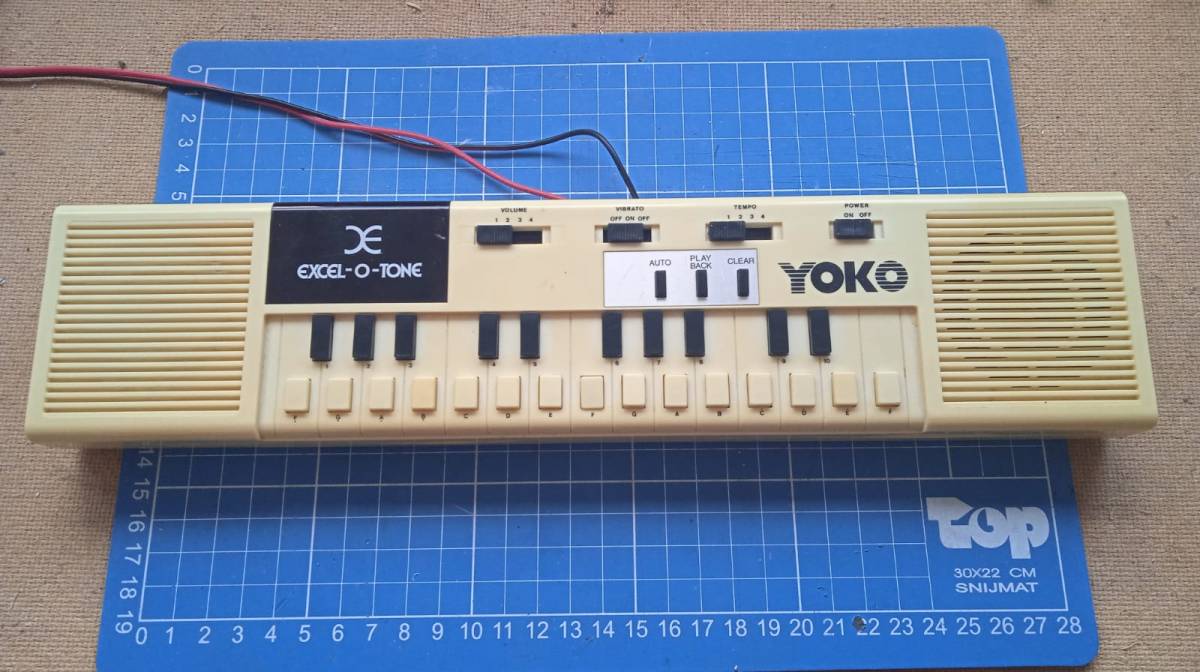2 euros at the thriftstore, don’t mind if I do! The Excel-O-Tone is pretty much a dumbed down Casio VL-1. It makes monophonic bleep bloop noises with a parrot button that repeats your last played x amount of notes. You can add in vibrato on the bleep bloops and that’s about it. Also I haven’t got a clue what a Yoko is besides an exquisite musician and artist from Japan.
Features
- Power on/off switch
- 25 keys
- 1 oscillator (monophonic)
- 4 volume levels
- 4 tempo levels
- Off-On-Off vibrato function
- Note sequence repeat button
- No clue what the “auto” button does, it just stops all keys from making sound
- Headphone output (3.5mm)
- Battery powered (4x AA @ 1.5V)
- 2 extra spots to store batteries for your calculator or something?
- DC IN (probably 6v)
- Yellowed
Why it sucks
- Wonky key response. Keys don’t register when playing too fast, sometimes stutter, sometimes plays an x amount of time even after letting go. Not very musician friendly so to speak.
- Vibrato not very convincing, also why is that switch off-on-off?
- The sequence repeat function doesn’t take rhythm in account, every note plays for the same duration.
Teardown

First thing we see are two speakers (such a luxury!) a small PCB on the bottom for the DC IN and headphones out and a big PCB on the top which has all the rest.

Zooming in on the interesting part shows us what they use for clock, microcontroller and audio output amp.
My guess is the CD4069 (Hex inverter) has some function as clock for the COP420 (datecode week 8, 1985) that happens to be a 4 bit microcontroller which also handles all the other functionality like the “keyboard” and other switches and buttons.
They chose to use an LM386 (type 1) as driver for the two speakers. Why they use two speakers is a cost-cutting mystery to me as the “synth” is mono. To make matters worse, it seemed like the speakers were connected out of phase which initially gave me acoustic headaches while playing the bleeps and bloops. I decided to swap the wires of one of the speakers to fix that.

Always interesting to see the manually routed single sided boards. If you didn’t know yet, the PCB designs were laid out with tape! This is why the tracks look so wobbly. The keys just use a membrane type-o technology. Nice and cheap. The switches are stuck on the PCB by those black plastic frames. No way to replace them if something were to happen to them!
Note the unused footprint in the top-left corner. Seems like they were also in the process of copying the calculator which could be found on the Casio VL-1.


